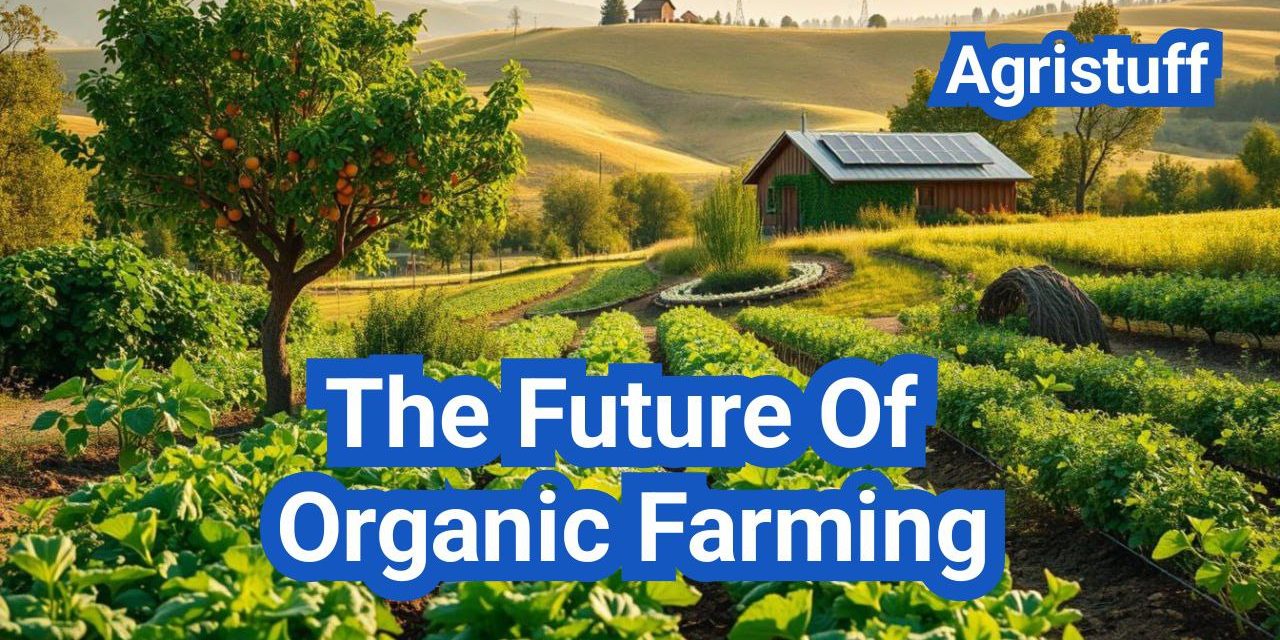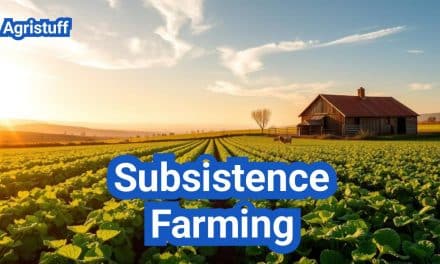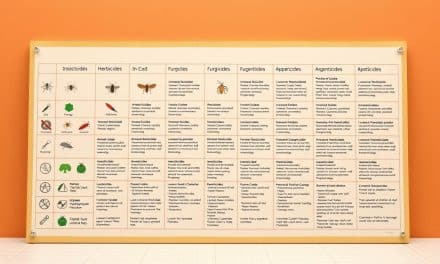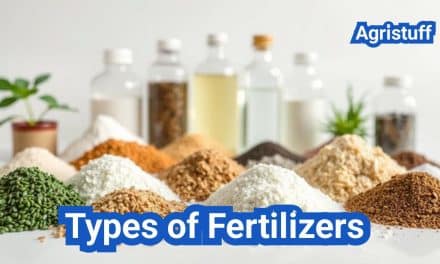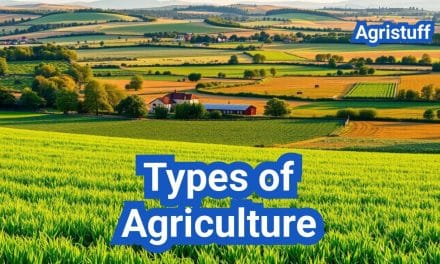Sustainable agriculture is gaining traction globally, driven by consumer demand for healthier and more environmentally friendly food options.
As the world grapples with climate change and environmental degradation, organic farming emerges as a viable solution. Recent studies indicate that the global organic food market is projected to grow significantly by 2030.
This growth is driven by increasing awareness of the benefits of sustainable agriculture and its potential to address public health concerns.
Key Takeaways
- The global organic food market is expected to grow substantially by 2030.
- Consumer demand for sustainable and healthy food options is on the rise.
- Organic farming addresses climate change and environmental degradation.
- Sustainable agriculture is crucial for public health.
- The future of farming is leaning towards more environmentally friendly practices.
Understanding Organic Farming Principles
The principles of organic farming are rooted in a deep understanding of ecological balance and biodiversity. This approach to agriculture focuses on working with natural processes to maintain soil health, conserve water, and minimize waste.
Core Philosophy of Organic Agriculture
The core philosophy of organic agriculture is centered on creating a sustainable farming system that enhances ecological balance and promotes biodiversity. Organic farming avoids the use of synthetic fertilizers and pesticides, instead relying on natural methods to control pests and diseases.
Benefits of Organic Farming for Health and Environment
Organic farming offers numerous sustainable farming benefits, including improved soil health, increased biodiversity, and reduced environmental pollution. By avoiding synthetic chemicals, organic farming also promotes consumer health by providing chemical-free produce.
Current Challenges in Conventional Agriculture
Conventional agriculture faces several conventional agriculture challenges, including soil degradation, water scarcity, and loss of biodiversity. The heavy reliance on synthetic fertilizers and pesticides has also raised concerns about environmental pollution and health risks.
By understanding the principles of organic farming, we can better appreciate the need for sustainable agricultural practices that prioritize ecological balance and biodiversity.
The Evolution of Organic Farming Practices

From its early beginnings to the modern era, organic farming has developed in response to environmental concerns and consumer demand. This evolution is marked by significant advancements in farming techniques, technological innovations, and changes in regulatory standards.
Historical Development of Organic Methods
Organic farming has its roots in traditional farming practices that date back centuries. However, the modern organic movement began to take shape in the early 20th century as a response to the industrialization of agriculture. Pioneers like Sir Albert Howard and Lady Eve Balfour were instrumental in promoting the benefits of organic farming through their work and writings.
Modern Innovations in Organic Techniques
Today, organic farming incorporates a range of modern techniques and technologies. These include precision agriculture, the use of drones for crop monitoring, and advanced irrigation systems. Such innovations have improved efficiency and productivity in organic farming.
- Precision agriculture techniques
- Use of drones for monitoring
- Advanced irrigation systems
Certification Standards and Their Impact
Certification standards play a crucial role in maintaining the integrity of organic farming. In the United States, the USDA Organic certification is the benchmark. It ensures that produce labeled as “organic” meets strict guidelines regarding the use of synthetic fertilizers, pesticides, and genetically modified organisms (GMOs).
| Certification | Description | Impact |
|---|---|---|
| USDA Organic | Ensures compliance with organic standards | Builds consumer trust |
| Non-GMO | Verifies absence of genetically modified organisms | Appeals to consumers concerned about GMOs |
The evolution of organic farming practices is a continuous process, driven by consumer demand, technological advancements, and the need for sustainable agricultural practices.
The Future of Organic Farming: Trends and Predictions
The organic farming sector is on the cusp of a revolution, with emerging technologies and shifting market trends set to redefine its landscape. As the global demand for organic products continues to grow, the industry is poised for significant expansion and innovation.
Emerging Technologies in Sustainable Agriculture
Technological advancements are playing a crucial role in shaping the future of organic farming. Sustainable agriculture technologies such as precision farming, vertical farming, and organic biopesticides are enhancing efficiency and productivity. For instance, precision agriculture allows farmers to optimize water and fertilizer application, reducing waste and environmental impact.
“The integration of technology in organic farming is not just a trend; it’s a necessity for meeting the growing global demand for organic produce.”
Market Growth Projections
The global organic market is expected to witness substantial growth in the coming years. Organic market growth is driven by increasing consumer awareness about health and environmental sustainability. According to market projections, the demand for organic products is likely to continue its upward trajectory, presenting new opportunities for farmers and stakeholders.
“The organic food market is projected to grow by 10% annually over the next five years, driven by consumer demand for healthier and more sustainable food options.”
Policy Changes Shaping Organic Farming
Policy changes are significantly influencing the organic farming landscape. Governments worldwide are implementing policies to support organic farming, such as subsidies for organic certification and programs to promote sustainable agricultural practices. These policies are expected to further boost the growth of the organic sector.
As the organic farming industry continues to evolve, it is crucial for stakeholders to stay informed about the latest trends and policy developments. By embracing sustainable agriculture technologies and adapting to changing market conditions, farmers and producers can capitalize on the growing demand for organic products.
Getting Started: Setting Up Your Organic Growing Space

Setting up your organic growing space is the foundational step towards a successful harvest. This initial phase involves several critical decisions that will impact the productivity and sustainability of your organic farm.
Selecting the Optimal Location
Choosing the right location for your organic growing space is crucial. Factors to consider include sunlight exposure, soil quality, and accessibility to water. A location with full sun (at least 6 hours of direct sunlight) and well-draining soil is ideal for most crops.
Preparing Your Growing Area
Once the location is selected, the next step is to prepare the growing area. This involves clearing the land, removing debris, and testing the soil for contaminants. Soil testing is a critical step to ensure that your growing area is free from pollutants and heavy metals.
| Soil Test | Purpose | Action Required |
|---|---|---|
| pH Level | To determine soil acidity | Adjust pH if necessary |
| Contaminant Check | To identify pollutants | Remediate contaminated soil |
| Nutrient Analysis | To assess nutrient levels | Add organic amendments as needed |
Essential Safety Considerations
Safety is a paramount concern when setting up your organic growing space. Two key areas to focus on are avoiding contaminated soils and practicing safe tool handling.
Avoiding Contaminated Soils
Contaminated soils can pose serious health risks. It’s essential to test your soil for heavy metals and other pollutants before planting. If contamination is found, remediation may be necessary.
Safe Tool Handling Practices
Using the right tools and handling them safely is crucial to prevent injuries. Always wear protective gear, such as gloves and safety glasses, when working with gardening tools.
By carefully selecting the optimal location, preparing your growing area, and adhering to safety considerations, you can establish a thriving organic growing space. This foundation will support your journey towards a successful and sustainable organic farm.
Essential Tools and Equipment for Modern Organic Farming
Modern organic farming relies heavily on the right tools and equipment to maximize efficiency and productivity. The choice of equipment can significantly impact the success of farming operations, whether small-scale or large.
Hand Tools for Small-Scale Operations
For small-scale organic farming, hand tools are indispensable. They allow for precise control and minimize soil disturbance. Essential hand tools include high-quality hoes, rakes, and trowels that are durable and ergonomic.
Machinery for Larger Organic Farms
Larger organic farms benefit from machinery that can handle tasks more efficiently than manual labor. Tractors, cultivators, and plows are examples of machinery that can be used in organic farming. These machines help in preparing the soil, controlling weeds, and harvesting crops on a larger scale.
Innovative Equipment for Precision Farming
Precision farming has become increasingly important in modern organic farming. Innovative equipment such as GPS-guided tractors, drones for crop monitoring, and automated irrigation systems help in optimizing resource use and improving crop yields. These technologies enable farmers to make data-driven decisions, reducing waste and enhancing sustainability.
Building and Maintaining Healthy Organic Soil

Soil health is crucial for the productivity and sustainability of organic farms. Healthy soil supports plant growth, improves crop yield, and enhances the overall ecosystem. To achieve this, farmers must focus on several key practices.
Step-by-Step Soil Testing Process
Soil testing is the first step towards understanding your soil’s health. It involves collecting soil samples from different areas of your farm and analyzing them for nutrient content, pH levels, and other factors. Here’s a simple process:
- Collect soil samples from various depths and locations.
- Mix the samples to create a composite sample.
- Send the sample to a laboratory for analysis.
- Interpret the results to determine your soil’s nutrient status and pH level.
Creating Nutrient-Rich Compost
Compost is a vital component of organic farming, as it enriches the soil with nutrients. To create nutrient-rich compost, follow these steps:
- Gather organic materials like kitchen scraps, leaves, and grass clippings.
- Layer the materials in a compost bin, balancing “green” and “brown” materials.
- Maintain moisture and aerate the compost regularly.
- Monitor the compost’s temperature and turn it as needed.
Natural Amendments for Specific Soil Types
Different soils require different amendments. Understanding your soil type is crucial for applying the right amendments.
Clay Soil Improvement Techniques
Clay soils can be dense and poorly draining. To improve clay soil, add organic matter like compost to enhance its structure and drainage.
Sandy Soil Enhancement Methods
Sandy soils drain quickly but may lack nutrients. Adding compost or well-rotted manure can improve their fertility and water-holding capacity.
| Soil Type | Amendment | Benefit |
|---|---|---|
| Clay | Compost | Improved drainage and structure |
| Sandy | Compost or manure | Enhanced fertility and water retention |
By following these practices, farmers can significantly improve their soil’s health, leading to more productive and sustainable organic farming operations.
Implementing Sustainable Water Management Systems

Implementing sustainable water management systems is a critical step towards achieving long-term viability in organic farming. Water is a precious resource, and its conservation is essential for the sustainability of agricultural practices. Efficient water management not only helps in reducing the environmental impact of farming but also improves crop yields and farm profitability.
Installing Drip Irrigation Systems
Drip irrigation is a highly efficient method of delivering water directly to the roots of plants, reducing evaporation and runoff. This technique is particularly beneficial in organic farming, where water conservation is paramount. By installing drip irrigation systems, farmers can significantly reduce their water usage while maintaining or even improving crop health.
Key benefits of drip irrigation include:
- Water conservation through reduced evaporation and runoff
- Increased crop yields due to consistent moisture levels
- Reduced soil erosion
Building Rainwater Harvesting Structures
Rainwater harvesting is another effective strategy for sustainable water management in organic farming. By collecting and storing rainwater, farmers can reduce their reliance on groundwater and municipal water supplies. This not only conserves water but also helps in maintaining a healthy water table.
“Rainwater harvesting is a simple yet effective way to conserve water and reduce the environmental impact of farming.”
Developing Drought Resistance Strategies
Developing strategies to resist drought is crucial for the long-term sustainability of organic farms. This can involve using drought-resistant crop varieties, improving soil health through organic amendments, and implementing conservation tillage practices. By enhancing the soil’s water-holding capacity, farmers can better withstand periods of drought.
The use of organic mulches and cover crops can also play a significant role in reducing soil moisture loss and improving overall soil health.
Natural Pest Management Strategies

The key to thriving organic crops lies in understanding and implementing natural pest control methods. Effective natural pest management is crucial for maintaining the health and productivity of organic farms.
Attracting and Supporting Beneficial Insects
One of the most effective natural pest management strategies is to attract and support beneficial insects. These insects, such as ladybugs and lacewings, prey on pests that can damage crops. To attract these beneficial insects, farmers can plant a diverse range of flowers and herbs that provide nectar and shelter.
Examples of Beneficial Insects and Their Prey:
| Beneficial Insect | Pest Prey |
|---|---|
| Ladybugs | Aphids |
| Lacewings | Aphids, Whiteflies |
| Hoverflies | Aphids |
Creating Homemade Organic Pest Deterrents
Creating homemade organic pest deterrents is another effective strategy for managing pests. For example, a mixture of garlic and hot pepper can be used to deter aphids and other soft-bodied pests. Similarly, neem oil can be used to control a wide range of pests, including caterpillars and beetles.
“The use of natural pest control methods not only helps in reducing the chemical load in the environment but also aids in maintaining the ecological balance.” – Expert in Organic Farming
Implementing Integrated Pest Management
Integrated Pest Management (IPM) involves using a combination of techniques to manage pests effectively. This includes monitoring pest populations, using physical barriers, and applying biological controls.
Effective Monitoring Techniques
Effective monitoring involves regularly inspecting crops for signs of pest damage. Farmers can use sticky traps or other monitoring tools to detect pest populations early.
When and How to Intervene
Intervention should be based on the severity of the pest infestation. Farmers can use a range of methods, from cultural controls to biological controls, depending on the pest and the level of infestation.
By implementing these natural pest management strategies, organic farmers can reduce their reliance on chemical pesticides and maintain a healthy, balanced ecosystem.
Planning Successful Crop Rotations and Combinations

The art of planning successful crop rotations involves understanding the complex relationships between different crops and soil health. Effective crop rotation is crucial for maintaining soil fertility, reducing pests and diseases, and increasing crop yields.
Designing Multi-Year Rotation Systems
Designing a multi-year rotation system requires careful planning. It involves rotating crops from different families to avoid depleting the soil of specific nutrients. For example, rotating between legumes, brassicas, and solanaceae can create a balanced nutrient cycle.
| Crop Family | Example Crops | Nutrient Impact |
|---|---|---|
| Legumes | Beans, Peas | Nitrogen Fixing |
| Brassicas | Broccoli, Kale | Heavy Feeders |
| Solanaceae | Tomatoes, Peppers | Disease Susceptibility |
Implementing Companion Planting Strategies
Companion planting is another vital strategy in organic farming. Some plants, when grown together, can enhance growth, deter pests, or improve flavor. For instance, planting marigolds with tomatoes can help deter nematodes.
Avoiding Common Rotation Mistakes
Common mistakes in crop rotation include not rotating crops deeply enough, ignoring crop family relationships, and failing to plan for soil recovery periods. Avoiding these mistakes requires a thorough understanding of crop rotation principles and careful planning.
By implementing well-designed crop rotation and companion planting strategies, organic farmers can significantly improve soil health, reduce pest and disease pressure, and increase overall farm productivity.
Mastering Seed Saving and Biodiversity Preservation

Biodiversity preservation in organic farming begins with the simple yet powerful act of saving seeds. Seed saving is a crucial practice that not only ensures the continuation of diverse crop varieties but also promotes ecological balance. By mastering seed saving techniques, organic farmers can maintain the genetic integrity of their crops and contribute to a more resilient agricultural system.
Techniques for Successful Seed Collection
Successful seed collection starts with selecting healthy, mature plants. It’s essential to identify the best plants for seed production, taking into account factors like disease resistance and desirable traits. Proper timing is also critical; seeds should be harvested when they are fully mature to ensure viability. Techniques such as hand-pollination or isolation of seed crops can help maintain purity and prevent cross-pollination with other varieties.
Proper Storage Methods for Long-Term Viability
Once seeds are collected, proper storage is vital to maintain their viability. Seeds should be dried thoroughly to reduce moisture content, then stored in a cool, dark place. Using airtight containers or seed vaults can protect seeds from pests and environmental factors. Regular checks on stored seeds can help identify any issues early on, ensuring the longevity of the seed stock.
Building a Diverse Seed Bank
A diverse seed bank is the cornerstone of a resilient organic farm. By collecting and storing seeds from a wide range of crop varieties, farmers can ensure they have access to the genetic material needed to adapt to changing conditions. This involves not just saving seeds from one’s own farm but also exchanging seeds with other farmers and preserving heirloom varieties. A diverse seed bank supports biodiversity and enhances the farm’s ecological balance.
Scaling Your Organic Operation: Growth Strategies

As organic farming operations expand, effective scaling strategies become crucial for success. This growth involves more than just increasing the size of your operation; it requires careful planning, efficient workflows, and strategic infrastructure planning.
Transitioning from Backyard to Market Garden
Transitioning from a small backyard garden to a market garden is a significant step. It involves scaling up production while maintaining the quality and sustainability that organic farming demands. This transition requires assessing your current resources, including land, water, and labor, and determining how to optimize them for larger production.
One key aspect is diversifying your crops to meet market demands while maintaining soil health through crop rotation and companion planting.
Efficient Workflows for Medium-Scale Production
For medium-scale production, efficient workflows are essential. This includes implementing effective irrigation systems and utilizing tools and equipment that can handle the increased scale without compromising organic principles.
Streamlining tasks and potentially investing in mechanized tools designed for organic farming can significantly boost productivity.
Infrastructure Planning for Commercial Operations
When scaling to commercial operations, infrastructure planning becomes critical. This involves not only expanding your growing area but also investing in appropriate storage and processing facilities to handle your produce.
Additionally, planning for adequate packaging and distribution channels is necessary to get your products to market efficiently.
By focusing on these growth strategies, organic farmers can successfully scale their operations, meeting the growing demand for organic produce while maintaining the integrity of their farming practices.
Integrating Technology in Your Organic Farm
Technology is revolutionizing organic farming by introducing innovative methods for resource optimization and data-driven decision making. As the organic farming sector continues to grow, the integration of technology is becoming increasingly important for farmers to stay competitive and sustainable.
Affordable Smart Farming Applications
Smart farming applications have made it easier for organic farmers to manage their farms more efficiently. These applications offer a range of tools, from crop monitoring to weather forecasting, that help farmers make informed decisions. Many of these applications are affordable and designed specifically with the needs of organic farmers in mind.
Using Sensors for Resource Optimization
Sensors play a crucial role in optimizing resources on organic farms. By monitoring soil moisture, temperature, and other factors, sensors provide real-time data that farmers can use to adjust their irrigation and other practices. This not only conserves resources but also improves crop health and yield.
Data-Driven Decision Making Tools
Data-driven decision making is becoming increasingly important in organic farming. By analyzing data from various sources, including sensors and weather stations, farmers can make more informed decisions about planting, harvesting, and crop management.
Record-Keeping Systems
Effective record-keeping is essential for any farm, and technology has made it easier than ever. Digital record-keeping systems allow farmers to track everything from planting dates to yield data, making it easier to analyze performance and make adjustments.
Yield and Resource Analysis
Analyzing yield and resource data is critical for optimizing farm performance. By using data analytics tools, farmers can identify areas for improvement and make data-driven decisions to enhance their operations.
By embracing technology, organic farmers can improve their efficiency, productivity, and sustainability, ensuring a brighter future for the industry.
Conclusion: Embracing the Organic Future
As we look to the future, it’s clear that organic farming will play a vital role in shaping a sustainable agricultural landscape. The growing demand for organic produce, coupled with advancements in technology and practices, is paving the way for a brighter future in sustainable agriculture.
The organic future is not just about meeting consumer demand; it’s about adopting a holistic approach to farming that prioritizes soil health, biodiversity, and efficient water use. By embracing organic farming practices, farmers can contribute to a healthier environment while maintaining profitable operations.
As the industry continues to evolve, we can expect to see innovative solutions and technologies that make organic farming more accessible and efficient. With the right policies and practices in place, the future of organic farming is poised for continued growth and success, ultimately leading to a more sustainable conclusion for our agricultural systems.
FAQ
What is organic farming, and why is it becoming increasingly important?
Organic farming is an agricultural practice that avoids the use of synthetic fertilizers, pesticides, and genetically modified organisms. It’s becoming increasingly important due to growing consumer demand for sustainable and healthy food options, as well as its potential to mitigate climate change and environmental degradation.
What are the core principles of organic farming?
The core principles of organic farming include a holistic approach that considers the long-term effects of farming practices on the environment and human health, maintaining soil health, and conserving biodiversity.
How does organic farming benefit the environment and human health?
Organic farming benefits the environment by conserving biodiversity, improving soil health, and reducing pollution. It benefits human health by providing nutritious food options, reducing exposure to synthetic chemicals, and promoting sustainable agricultural practices.
What are some modern innovations in organic farming techniques?
Modern innovations in organic farming include the use of precision agriculture, drip irrigation, and organic amendments. These techniques improve efficiency, reduce waste, and promote sustainable agricultural practices.
How can I get started with setting up my organic growing space?
To get started, select a suitable location, prepare your growing area by testing and amending your soil, and adopt safe practices such as crop rotation and integrated pest management.
What are some essential tools and equipment for modern organic farming?
Essential tools and equipment for modern organic farming include hand tools for small-scale operations, machinery for larger farms, and innovative equipment for precision farming, such as drones and sensor technology.
How can I maintain healthy organic soil?
To maintain healthy organic soil, test your soil regularly, create nutrient-rich compost, and use natural amendments tailored to your specific soil type.
What are some strategies for implementing sustainable water management systems?
Strategies for implementing sustainable water management systems include installing drip irrigation systems, building rainwater harvesting structures, and developing drought resistance strategies.
How can I manage pests naturally in my organic farm?
To manage pests naturally, attract beneficial insects, create homemade organic pest deterrents, and implement integrated pest management strategies.
What are the benefits of crop rotation and companion planting?
Crop rotation and companion planting can improve soil health, reduce pests and diseases, and increase biodiversity. They are essential strategies for maintaining a healthy and productive organic farm.
How can I save seeds and preserve biodiversity on my organic farm?
To save seeds and preserve biodiversity, use techniques for successful seed collection, store seeds properly, and build a diverse seed bank.
How can technology be integrated into organic farming?
Technology can be integrated into organic farming through the use of affordable smart farming applications, sensors for resource optimization, and data-driven decision-making tools.
What are the market growth projections for organic farming?
Market growth projections for organic farming are positive, driven by increasing consumer demand for sustainable and healthy food options.
How do policy changes impact the organic farming industry?
Policy changes, such as certification standards and subsidies, can significantly impact the organic farming industry by influencing market trends, production practices, and the overall growth of the industry.

